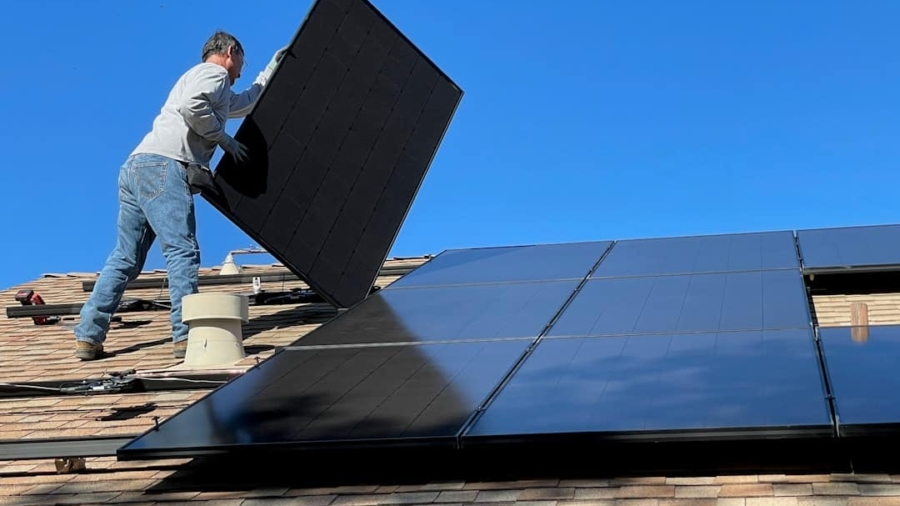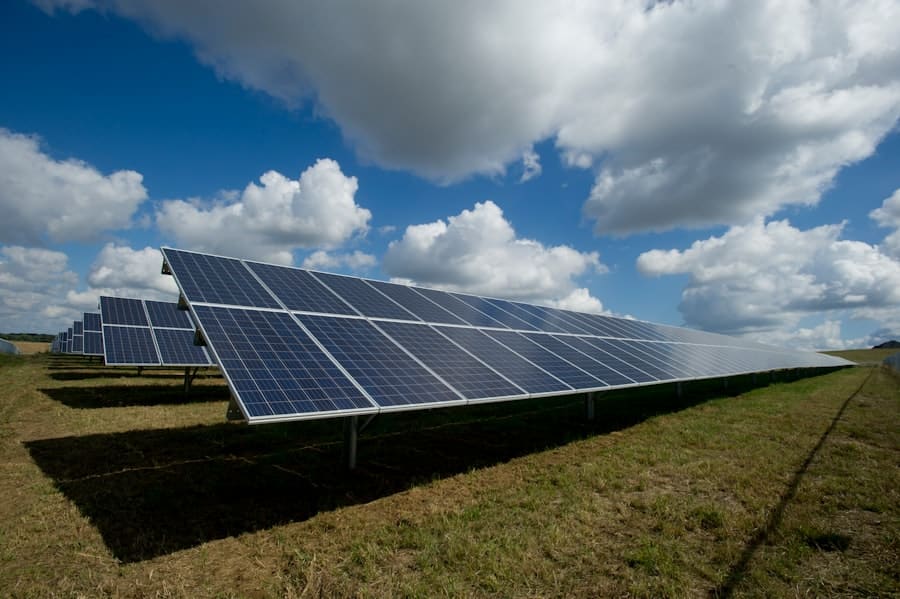The concept of energy harvesting roads represents a transformative approach to urban infrastructure, merging transportation with renewable energy generation. As cities grapple with the dual challenges of increasing energy demands and the urgent need for sustainable solutions, energy harvesting roads emerge as a promising innovation. These roads are designed to capture kinetic energy generated by vehicles and convert it into usable electrical energy.
This not only contributes to the energy grid but also enhances the sustainability of urban environments, making them more resilient in the face of climate change. Energy harvesting roads can take various forms, from piezoelectric materials embedded in the pavement to advanced technologies that utilize solar panels integrated into road surfaces. The potential applications of this technology are vast, ranging from powering streetlights and traffic signals to providing energy for electric vehicle charging stations.
As urban populations continue to swell, the integration of such technologies into city planning becomes increasingly critical. The intersection of transportation and energy generation offers a unique opportunity to rethink how cities can operate more efficiently while reducing their carbon footprint.
Key Takeaways
- Energy harvesting roads use innovative technology to capture and convert kinetic energy from vehicles into electricity.
- The technology behind energy harvesting roads involves the use of piezoelectric materials and electromagnetic induction to generate power.
- Energy harvesting roads offer benefits for smart cities including sustainable energy generation, reduced carbon emissions, and improved infrastructure.
- Implementation of energy harvesting roads faces challenges such as high initial costs, maintenance requirements, and integration with existing infrastructure.
- Case studies of energy harvesting roads in smart cities demonstrate successful implementation and potential for widespread adoption in the future.
The Technology Behind Energy Harvesting Roads
At the heart of energy harvesting roads lies a variety of technologies designed to convert mechanical energy into electrical energy. One of the most prominent methods involves piezoelectric materials, which generate electricity when subjected to mechanical stress. When vehicles drive over these specially designed road surfaces, the pressure exerted on the piezoelectric elements produces an electrical charge.
This technology has been successfully implemented in various pilot projects, demonstrating its feasibility and effectiveness in real-world scenarios. In addition to piezoelectric systems, other technologies such as electromagnetic induction and thermoelectric generators are also being explored. Electromagnetic induction works by using magnets and coils to generate electricity as vehicles pass over them, while thermoelectric generators convert temperature differences into electrical energy.
Furthermore, solar panels can be integrated into road surfaces, allowing for the capture of solar energy during daylight hours. Each of these technologies presents unique advantages and challenges, but collectively they represent a significant step toward creating self-sustaining urban infrastructures.
Benefits of Energy Harvesting Roads for Smart Cities
The integration of energy harvesting roads into smart city frameworks offers numerous benefits that extend beyond mere energy generation. One of the most significant advantages is the reduction in reliance on traditional power sources, which often contribute to greenhouse gas emissions and environmental degradation. By harnessing the kinetic energy produced by vehicles, cities can create a more sustainable energy ecosystem that aligns with global efforts to combat climate change.
Moreover, energy harvesting roads can enhance the resilience of urban infrastructure. As cities face increasing pressures from population growth and climate-related events, having a decentralized energy source can provide stability during power outages or disruptions in the traditional grid. This resilience is particularly crucial for critical services such as hospitals, emergency response systems, and public transportation networks.
Additionally, the implementation of these technologies can stimulate local economies by creating jobs in manufacturing, installation, and maintenance.
Implementation and Challenges of Energy Harvesting Roads
While the potential benefits of energy harvesting roads are substantial, their implementation is not without challenges. One of the primary hurdles is the initial cost associated with developing and installing these advanced systems. The materials used in piezoelectric technology and other energy harvesting methods can be expensive, and cities may struggle to justify these costs without clear long-term financial benefits.
Additionally, the integration of these systems into existing roadways requires careful planning and coordination with various stakeholders, including transportation agencies and local governments. Another significant challenge is ensuring the durability and reliability of energy harvesting technologies under real-world conditions. Roads are subjected to heavy traffic loads, weather extremes, and other environmental factors that can impact the performance of embedded systems.
Continuous monitoring and maintenance are essential to ensure that these technologies function optimally over time. Furthermore, public acceptance plays a crucial role in the successful implementation of energy harvesting roads; educating citizens about the benefits and functionality of these systems is vital for fostering support.
Case Studies of Energy Harvesting Roads in Smart Cities
Several cities around the world have begun to explore the potential of energy harvesting roads through pilot projects and innovative installations. One notable example is the city of Rotterdam in the Netherlands, which has implemented piezoelectric technology in its roadways. The project aims to capture energy from vehicles traveling along busy routes, converting it into electricity that powers streetlights and other municipal services.
This initiative not only demonstrates the feasibility of energy harvesting roads but also serves as a model for other cities looking to adopt similar technologies. In another instance, San Francisco has experimented with solar roadways that integrate photovoltaic panels into their street surfaces. These solar panels not only generate electricity but also provide additional benefits such as improved safety through enhanced street lighting.
The project has garnered attention for its innovative approach to urban design and sustainability, showcasing how cities can leverage technology to create multifunctional spaces that serve both transportation and energy needs.
Future of Energy Harvesting Roads in Smart Cities
Advancements in Energy Conversion Methods
Ongoing research is focused on improving the efficiency and effectiveness of energy conversion methods while reducing costs associated with materials and installation.
Cities are increasingly recognizing the importance of sustainable infrastructure that not only meets current demands but also anticipates future challenges related to climate change and population growth.
Collaborative Efforts for Innovation
Collaborative efforts between governments, private sector entities, and research institutions will be essential in driving innovation and scaling successful projects.
Environmental Impact of Energy Harvesting Roads
The environmental implications of energy harvesting roads are significant, particularly in terms of reducing carbon emissions and promoting sustainable practices within urban settings. By generating clean energy from vehicular movement, these roads can help mitigate the reliance on fossil fuels for electricity generation. This shift not only contributes to lower greenhouse gas emissions but also supports national and international goals aimed at achieving net-zero emissions.
Furthermore, energy harvesting roads can enhance urban biodiversity by integrating green infrastructure elements such as vegetation alongside roadways. This approach not only improves air quality but also provides habitats for local wildlife, contributing to healthier ecosystems within urban areas. The combination of renewable energy generation and ecological considerations positions energy harvesting roads as a multifaceted solution that addresses both environmental sustainability and urban livability.
Conclusion and Call to Action for Energy Harvesting Road Development
As cities continue to evolve in response to growing populations and environmental challenges, the development of energy harvesting roads stands out as a critical component of future urban infrastructure. The potential benefits—ranging from reduced carbon emissions to enhanced resilience—underscore the importance of investing in this innovative technology. However, realizing this potential requires concerted efforts from policymakers, urban planners, engineers, and communities alike.
A call to action is necessary for stakeholders at all levels to prioritize research, funding, and collaboration aimed at advancing energy harvesting road initiatives. By fostering an environment conducive to innovation and embracing sustainable practices, cities can pave the way for a cleaner, more efficient future that harnesses the power of movement itself. The journey toward smarter cities begins with bold steps toward integrating renewable energy solutions into our everyday lives—energy harvesting roads are a vital part of that journey.
In a recent article on top trends on LinkedIn for 2023, experts discuss the growing importance of sustainability and smart city initiatives. This aligns with the concept of energy harvesting roads, which are revolutionizing the way cities generate power and reduce their carbon footprint. By harnessing the power of kinetic energy from vehicles passing over specially designed roads, cities can create a more sustainable energy source for powering various smart city technologies. This innovative approach to energy generation is just one example of how technology is shaping the future of urban development.
FAQs
What are energy harvesting roads?
Energy harvesting roads are roads that are equipped with technology to capture and convert energy from various sources such as sunlight, vibrations from passing vehicles, and temperature differentials into electricity.
How do energy harvesting roads work?
Energy harvesting roads work by using various technologies such as solar panels, piezoelectric materials, and thermoelectric generators to capture and convert different forms of energy into electricity. This electricity can then be used to power street lights, traffic signals, and other infrastructure in smart cities.
What are the benefits of energy harvesting roads?
The benefits of energy harvesting roads include the generation of renewable energy, reduced reliance on traditional power sources, and the ability to power smart city infrastructure. Additionally, energy harvesting roads can contribute to sustainability and reduce carbon emissions.
Where are energy harvesting roads being implemented?
Energy harvesting roads are being implemented in various cities around the world, particularly in smart city initiatives. These roads are often installed in urban areas with high traffic volume and a focus on sustainability and energy efficiency.
What are some examples of smart city infrastructure powered by energy harvesting roads?
Smart city infrastructure powered by energy harvesting roads can include street lights, traffic signals, electric vehicle charging stations, and sensors for monitoring traffic, air quality, and other environmental factors. These technologies help cities operate more efficiently and sustainably.



